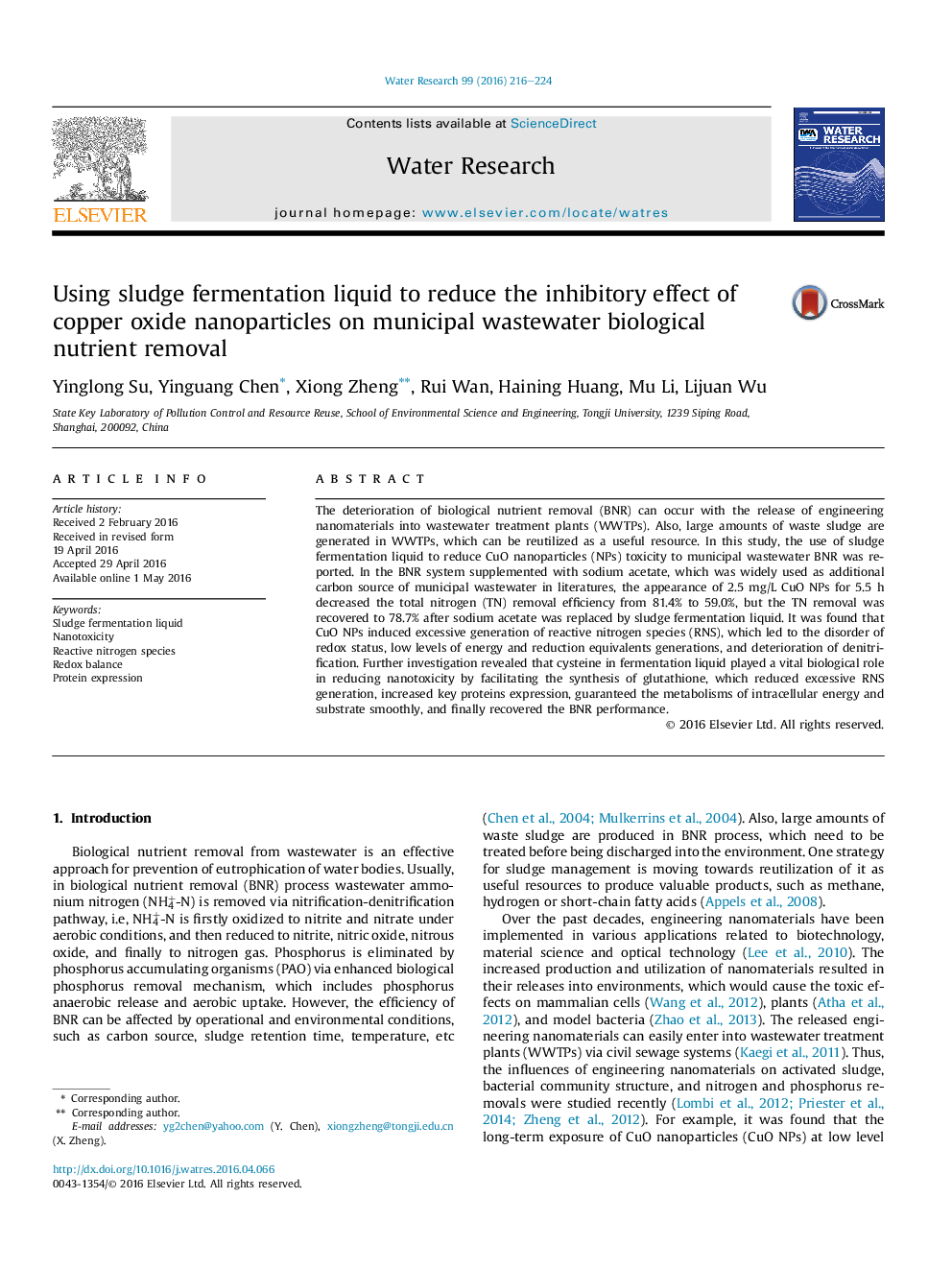| کد مقاله | کد نشریه | سال انتشار | مقاله انگلیسی | نسخه تمام متن |
|---|---|---|---|---|
| 6364987 | 1623069 | 2016 | 9 صفحه PDF | دانلود رایگان |
- CuO NPs induced excessive generation of reactive nitrogen species of denitrifier.
- Fermentation liquid from sludge was used to mitigate the nanotoxicity towards BNR.
- Cysteine in fermentation liquid played vital role in toxicity reduction.
- The restored redox balance attributed to the recovery of nitrogen removal.
The deterioration of biological nutrient removal (BNR) can occur with the release of engineering nanomaterials into wastewater treatment plants (WWTPs). Also, large amounts of waste sludge are generated in WWTPs, which can be reutilized as a useful resource. In this study, the use of sludge fermentation liquid to reduce CuO nanoparticles (NPs) toxicity to municipal wastewater BNR was reported. In the BNR system supplemented with sodium acetate, which was widely used as additional carbon source of municipal wastewater in literatures, the appearance of 2.5Â mg/L CuO NPs for 5.5Â h decreased the total nitrogen (TN) removal efficiency from 81.4% to 59.0%, but the TN removal was recovered to 78.7% after sodium acetate was replaced by sludge fermentation liquid. It was found that CuO NPs induced excessive generation of reactive nitrogen species (RNS), which led to the disorder of redox status, low levels of energy and reduction equivalents generations, and deterioration of denitrification. Further investigation revealed that cysteine in fermentation liquid played a vital biological role in reducing nanotoxicity by facilitating the synthesis of glutathione, which reduced excessive RNS generation, increased key proteins expression, guaranteed the metabolisms of intracellular energy and substrate smoothly, and finally recovered the BNR performance.
312
Journal: Water Research - Volume 99, 1 August 2016, Pages 216-224
